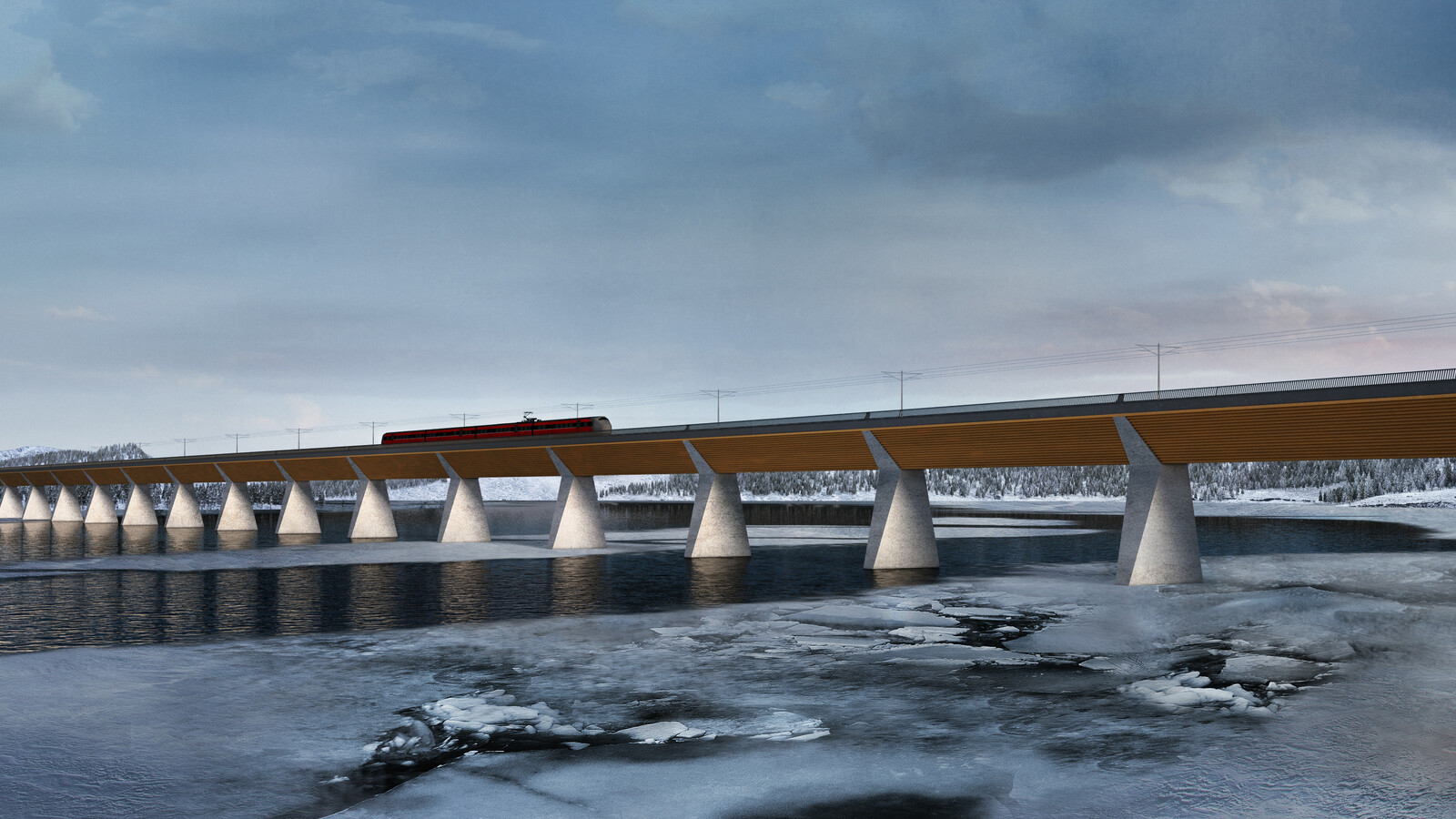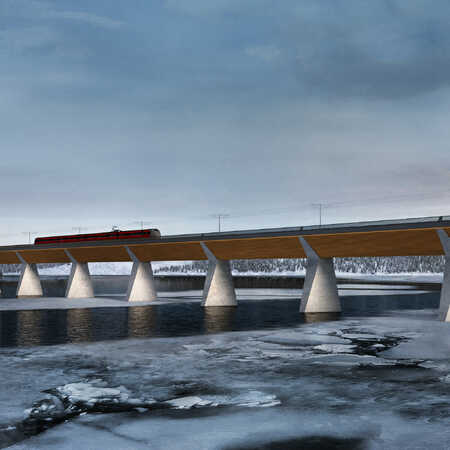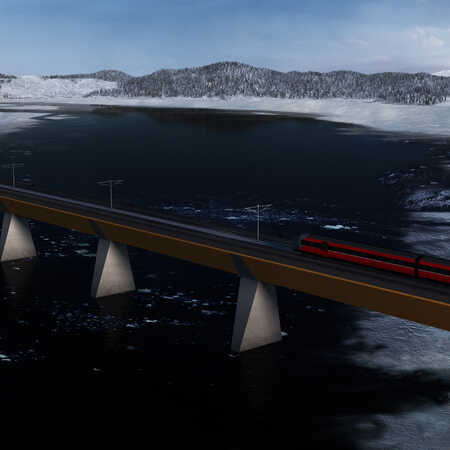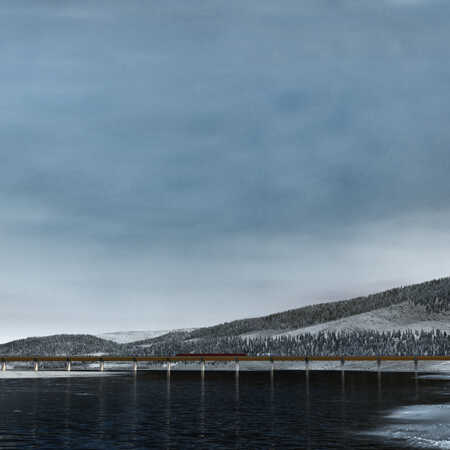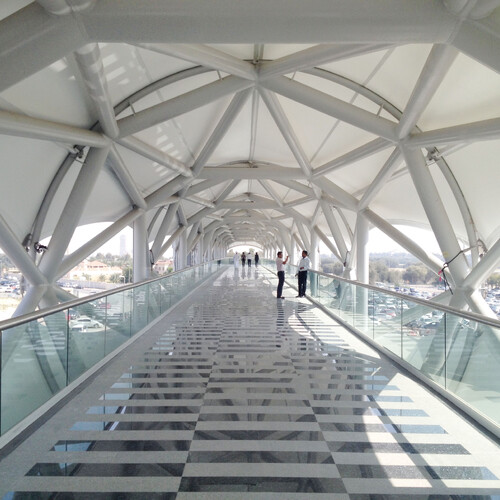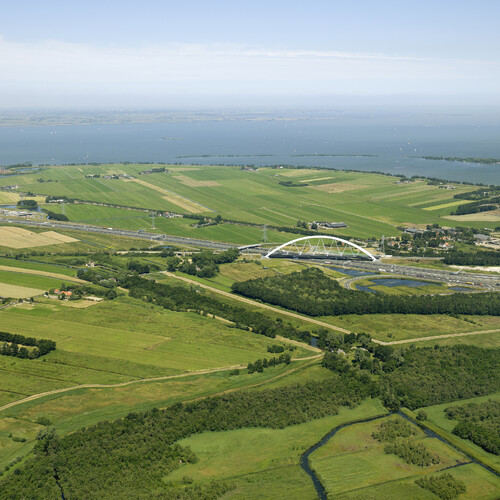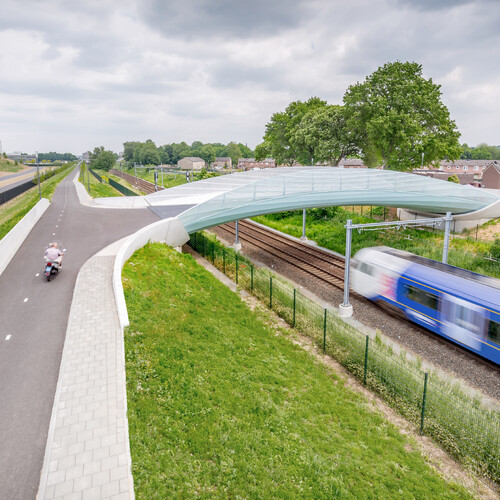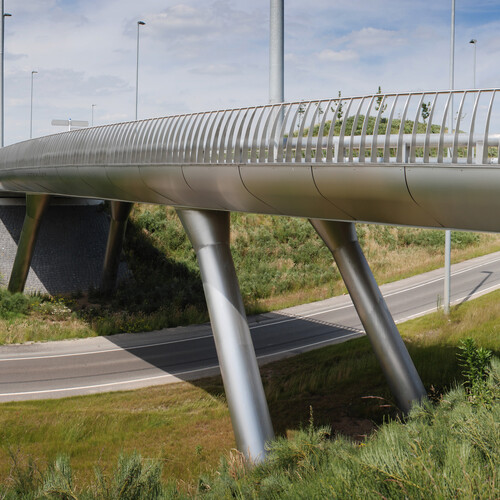Research into building with wood
What can architects contribute to minimalizing the effects of climate change, caused by the emission of greenhouse gases? While designing, the obvious answer is to pay attention to insulation, renewable energy and opportunities to recycle material. The largest CO2 emission caused by construction however is the result of the production of the building materials to be used. Concrete and steel are versatile materials and quickly produced but cause a relatively high CO2 emission. There is however a building material that produces itself, naturally, and captures CO2 from the atmosphere: wood. Its constructive properties may be limited, and it may demand more maintenance, but it is light, versatile and easy to combine with other materials and almost CO2 neutral and recyclable.
So it might be a good moment to give our knowledge of building with wood a thorough update. What types of possibilities are there when we combine wood, modern technology and contemporary design? A design tender for a railway bridge near Tangenvika in Norway, commissioned by Bane NOR, seemed an excellent opportunity for the architectural studio ZJA to take a step forward with exactly that type of research.
A railway bridge in Norway
Norwegian authorities are improving rail connections between Oslo and other cities by means of the Intercity Project. One of the elements of the so-called Intercity Project is the development of double tracks for high-speed trains on the Oslo-Lillehammer line. This together with a substantial reduction in the length of track. This reduction requires a 3 km long tunnel and the longest railway bridge in the country. Near the village of Espa on the banks of lake Mjøsa, one of the largest lakes in Norway, the project plans a kilometre-long bridge across the bay at the peninsula of Tangenvika.
In collaboration with Iv-Consult, ZJA conducted an enquiry into the possibilities and limitations of such a bridge, consisting of twenty 50-meter spans, and two spans of 35 meters, designing it as a self-supporting construction out of wood resting on concrete columns. Iv-Consult went ahead with a thorough technical enquiry. This resulted in the comparison of five different design options.
Laminated wood
Nowadays wood offers architects a lot more options than only trees turned into timber. Laminated wood has considerably better constructive and predictable properties, has more strength and can also be shaped to form arches. By working with laminated wood, the desired property, shape and size can be determined. This allows construction elements to be made that can be integrated into a beautiful and larger whole. Spruce and pine wood can be sourced locally in Norway and are an obvious choice when it comes to value for money. In some designs a combination with higher-quality woods and steel reinforcements is required, other types of design require a higher volume of wood.
The arch bridge
The technical research compared designs with continuous and non-continuous beams and looked at solid and hollow constructions and options with an open beam construction. The most cost-effective, strongest and most appealing designs survived. From the last four remaining options, ZJA chose one to be the focus of further research. This design is an arched bridge from laminated, curved beams, resting on custom-made lozenge-shaped concrete columns, to distribute the forces. One of the advantages of this design is that it can be largely prefabricated and assembled on site. Its proportions, the interplay of wood and concrete, the straight and arched lines seem to offer the most harmony of all the designs. The rectangular robust columns and the rhythm of the relatively long wooden arches over the bay are a fitting addition to the precious landscape.
Further research
The comparative design research raised a number of questions. These relate to the volume of the used materials, possible prefabrication and whether steel detailing is still needed to make certain bridge parts strong enough. ZJA will continue the research into building with wood and will continue to ask questions. Which design is truly the most sustainable? What are the demands in terms of maintenance in the rough Norwegian weather? Which options are strong and affordable and still offer the most opportunities for interesting design? And which design is the most beautiful in that landscape, with its history, there in that bay in Norway?
Architect: ZJA
Engineering firm: IV-Consult
Design tender: 2020
Project: #1183
